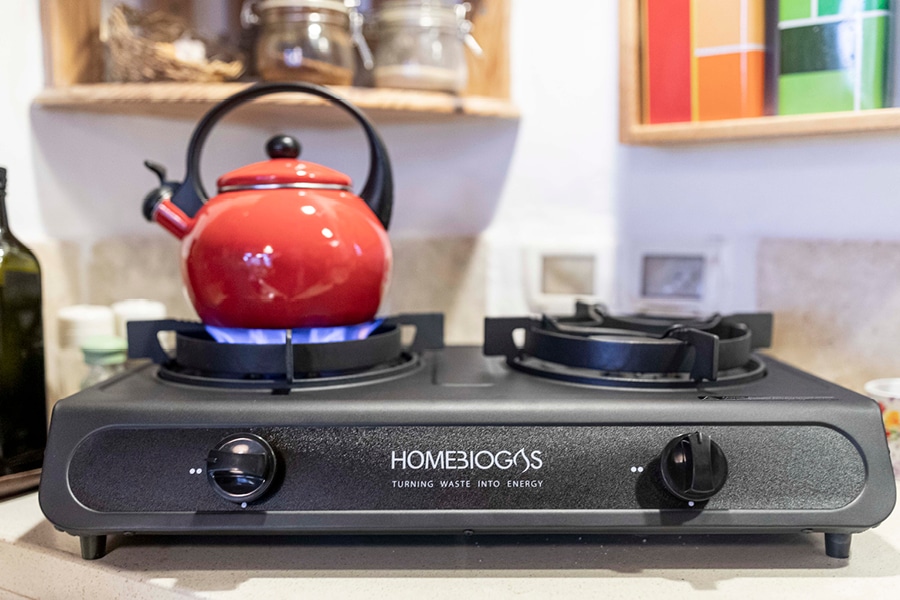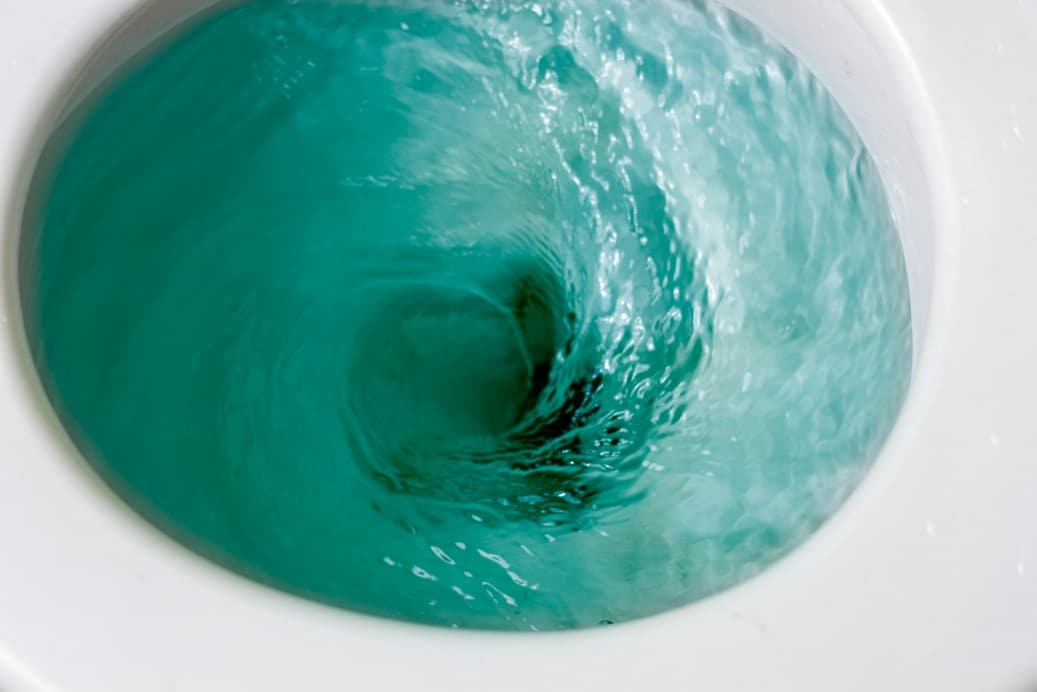
What is a waterless toilet?
A waterless toilet is a human waste management system that doesn’t use water. It’s an eco-friendly alternative to traditional flushing toilets and leverages biological processes or other technologies to reduce water consumption.
The most common types of waterless toilets are:
- Composting toilets – systems that naturally decompose human waste into nutrient-rich compost that can be used to fertilize crops.
- Incinerating toilets – an alternative that burns human waste into sterile ashes.
- Dry flush toilets – systems that use liner bags that collapse and seal the waste every time you flush and store it in airtight pockets.
Some composting toilets might require a minimum amount of water to work correctly and maintain a clean environment. However, we’re talking about low amounts—less than 0.5 gallons of water/flush, with a significant impact on the overall water consumption and bills, compared to traditional toilets.
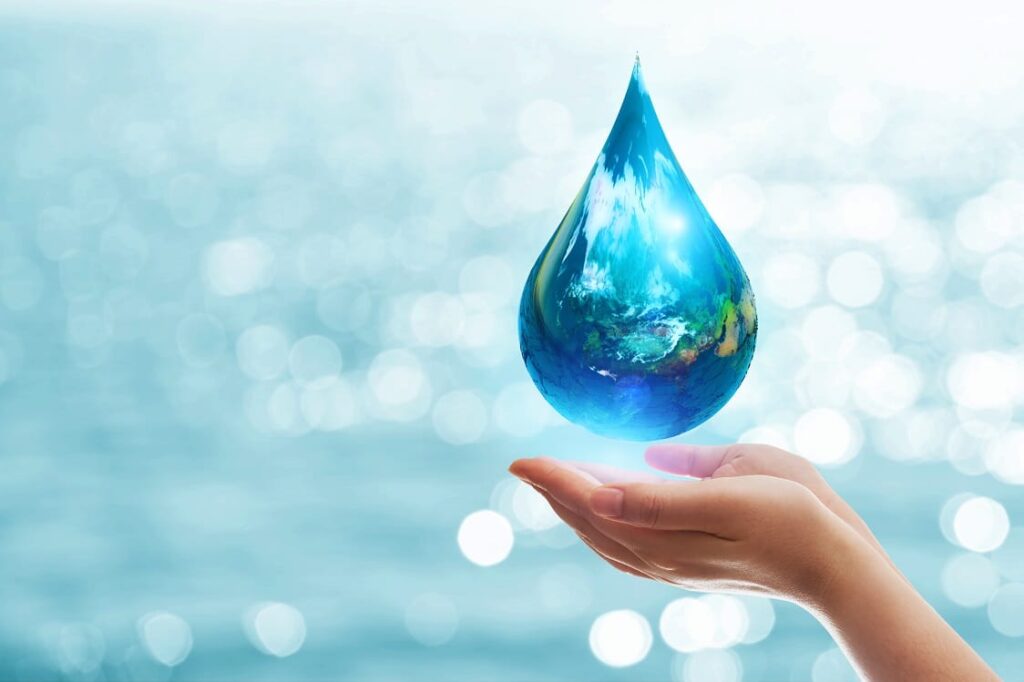
How do waterless toilets work?
Every type of waterless toilet uses a different principle to store and manage waste, but the concept behind these products is the same. They push the human waste down to a container where waste is treated with no odors or need for chemical products.
Let’s see how each type of waterless toilet works.
Composting toilets
Composting toilets store human waste in a container placed under the seat or somewhere further from the toilet itself. Human waste is divided into solid and liquid matter, and a decomposition process starts. Waste gets broken down into fertilizer either through anaerobic or aerobic decomposition, depending on the type of toilet you have.
Some models require the usage of a carbon additive, such as coconut coir, sawdust, or peat moss. These products help create air pockets to support the decomposition process while also helping to manage odors.
Depending on the system you buy, you might have to empty the tank daily, weekly, yearly, or even once every several years.
Incinerating toilets
Incinerating toilets use electric power or natural or propane gas to burn human waste and transform it into sterile ashes. The temperatures necessary for completing this process are between 970-1400°F.
Electric incinerating toilets are designed to look like traditional toilets. The stainless steel toilet is coated with a liner that keeps the bowl clean and helps move the waste down to the incineration chamber. As a general guideline, this system needs to burn the waste every 2-4 “flushes.”
It takes about an hour for the waste to turn into ash that can be safely discarded into the environment. The system includes filters that manage odors, an exhaust vent, and an exhaust blower for controlling the high temperature. The entire process requires power, so the toilet won’t work during an outage.
Gas-powered incinerating toilets are more complex, require a natural gas or propane source, and require regular inspection to observe all health and safety protocols. Moreover, it doesn’t look like a traditional toilet, as it doesn’t have a bowl.
The waste is dropped into the burn chamber through a system that reminds of portable restrooms. When the incineration cycle starts, the opening of the burn chamber gets sealed, and the process can last up to 3-4 hours.
Dry flush toilets
Dry flush toilets use a double-layered liner that keeps the bowl clean and makes “flushing” easier. You press a button, and the mechanism twists and pulls the liner to seal the waste inside and pus it down into an airtight container. As the twisted liner goes down, a new liner gets pulled into the bowl.
The system needs power to function, and most dry flush toilets come with a battery and a charging cable. Some models also include adapters to charge the battery with solar energy.
FAQs about waterless toilets
Interested in how waterless systems work? Here are some answers to the most common questions on this topic.
Does a waterless toilet smell?
No, or better said, a waterless toilet shouldn’t smell. If you have one, and it smells, it means that the system hasn’t been installed correctly. Another reason why you might feel some odors is due to improper maintenance.
In most cases, waste gets stored and treated in a sealed environment, so no smells should get into your bathroom.
How to clean a waterless toilet?
The best way to clean a waterless toilet is with green products or vinegar and water, as chemicals can impact functionality. Depending on the system you have, you can use a toilet brush, wipes, or even a mop.
Composting toilets need extra care, so you need to use natural products compatible with the microorganisms that break down the waste and keep your waterless toilet functional.
What is the average cost of a waterless toilet?
Waterless toilets can cost anywhere between $500-700 and several thousand, depending on the type of system you buy, its capacity, and the materials used. Generally, the less you spend on the product, the higher the long-term maintenance costs are, so make sure you do the math before deciding.
The alternative is to build a DIY system, but it comes with health risks if you don’t install all elements correctly.
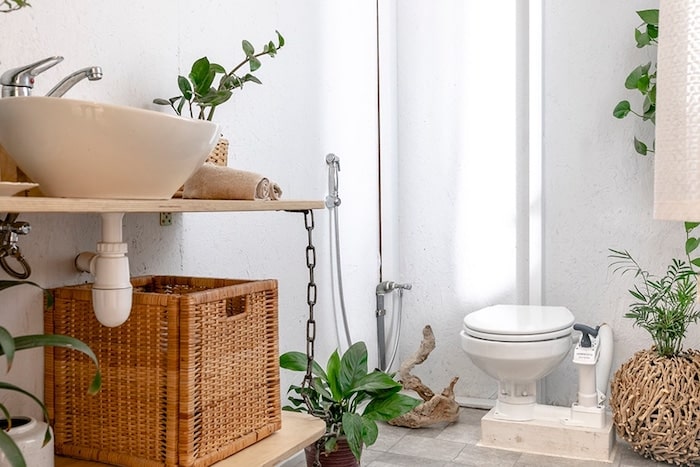
HomeBiogas Bio-toilet
Designed for the next generation of green innovation.
Advantages and disadvantages of waterless toilets
Advantages:
- Water-saving. As much as 24% of the daily water consumption is generated by flushing, making toilets are the top water consumer in an American household. In the UK, toilets use almost 30% of the water consumed. The bad news is this is all clean, drinking-quality water that can be used for better purposes.
- Low maintenance, in some cases. If you invest in a solid system, all you need to do is regular cleaning and emptying the tank where fertilizer or ashes are held. Without water, there are no broken pipes or leaks to worry about.
- Suitable for off-grid locations. As they don’t need to be connected to sewer and septic systems, these toilets make great choices for RVs, boats, mobile homes, and off-grid houses.
- Environment friendly. Minimum natural resources are required for waterless toilets to function—you can use green energy to power an incinerating toilet. Also, they don’t use chemical substances, so you get to manage your waste with a minimum impact on the environment.
Disadvantages:
- Odors and pests. These systems are highly effective when you keep them clean and follow the manufacturer’s instructions. If you forget to press the button when the tank is full or don’t get rid of the waste regularly, you risk attracting pests. Plus, heavy odors will come out of your waterless toilet.
- High maintenance, in some cases. Depending on the type of waterless toilet you choose, you might have to empty the container daily or weekly.
- Installation. Not all waterless systems are made equally, and some might not be suitable for a DIY project, regardless of your skills. Moreover, if you opt for a propane-powered incinerating toilet, you might need professional assistance to have a functional system.
- Upfront costs. Most waterless toilets are more expensive than traditional flushing toilets, so expect to pay more to have an eco-friendly toilet in your home.
Indoor waterless toilet vs. outdoor waterless toilet
Waterless toilet models are available for indoor and outdoor usage, but not all are versatile choices. That’s because indoor facilities come with specially designed chambers that are more suitable for small spaces and, often, require less maintenance than outdoor toilets.
Also, some types are more suitable for indoors than others. For example, an electric incinerating toilet can be used successfully indoors, but a toilet that requires propane and has a large burn chamber is better used outdoor.
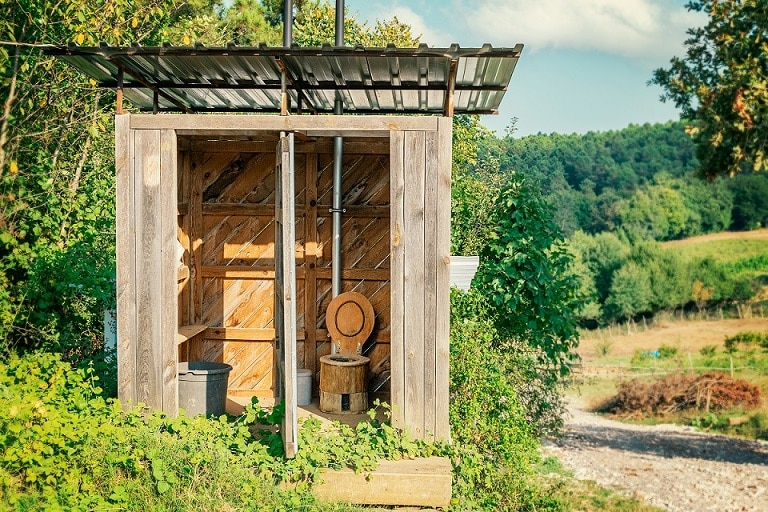
How to choose the right waterless toilet for your own needs
When picking the dry toilet that works for your property, you must consider several factors.
- Frequency of use. If you need a temporary setup, go for something easy to install for minimum costs.
- Mobility. If you need a waterless toilet for your RV or boat, a mobile, self-contained system is better than a complex toilet.
- Price. Calculate both upfront and long-term maintenance costs to make an educated buying decision.
- Installation challenges. Depending on the type of waterless toilet you choose, you might need additional assistance and even particular intervention from third-party providers to avoid malfunctions.
- Maintenance. Some waterless toilets require minimum to no maintenance, while others will have you emptying tanks of compost regularly.
- Capacity. Some toilets require you to manage the waste after 3-4 “flushes,” and some can go for weeks with no need to be emptied. Choose the right option for your house depending on your family’s size and calculate that people use the toilet 5 times a day on average.
- Disposal options. Composting toilets are best for homeowners who can use fertilizer for their lawns and gardens.
HomeBiogas 3 alternative toilet solutions:
Bio-Toilet & HomeBiogas 2
The HomeBiogas Bio-Toilet Kit & HBG2 is an alternative to regular waste management. It uses anaerobic digestion to transform human waste into cooking gas and fertilizer.
The kit includes a ceramic toilet bowl, a pump, a toilet seat with cover, a waste pipe with a vented loop attached, water and gas filters, a gas pipe, a biogas stove, and an easy-to-install backyard Bio-System where the transformation occurs.
This toilet solution is suitable for up to three people. It can help you reduce your carbon footprint by up to 6 tons of CO2 emissions a year and save 40,000 liters of water annually. The capacity of the digester supplies cooking gas for approximately one hour a day.
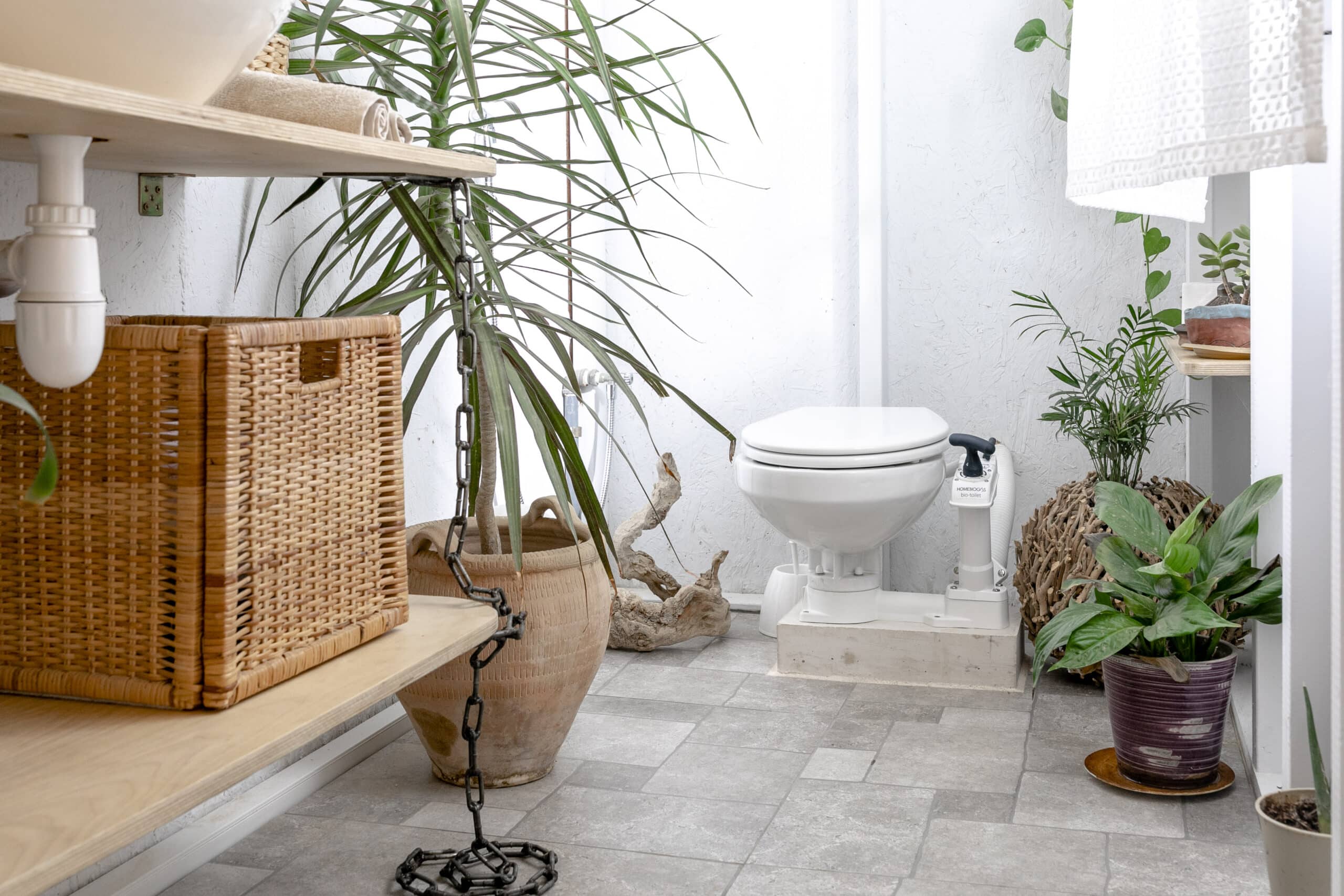
Bio-Toilet & HomeBiogas 4
The HomeBiogas Bio-Toilet Kit & HBG4, too, uses an anaerobic system to decompose waste and transform it into carbon-neutral biogas for cooking. The system is easy to install, safe, and environmentally friendly. It’s a suitable, modern solution for off-grid homes.
This version of the product can serve up to six adults, saving up to 72,000 liters of water per year. Thanks to a larger backyard Bio-System, this waste management system can supply cooking gas for two hours per day.
HomeBiogas 4 can treat human waste (up to 45 flushes per day) and food waste (12 liters per day). It helps you manage all your waste in one place and produce more cooking gas for your daily needs while generating balanced, nutrient-rich fertilizer for your plants.
Double Bio-Toilet & HomeBiogas 4
The Bio-Toilet & HBG4 is a double kit that provides two bio-toilets connected to one system simultaneously for increased flexibility. It’s suitable for up to six people—approximately 25 flushes per day. Compared to the other versions, this solution can only manage human waste.
The system can generate up to 700 liters of biogas per day (approximately 2 hours of cooking). The fertilizer resulting from the process must be treated in a mulch basin or drain field. Depending on the local regulations, you might need to connect it to the sewage system.
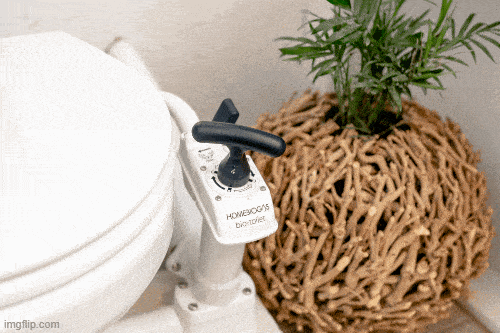
Summary
Waterless toilets are an effective, clean, and environmental-friendly alternative to traditional flushing toilets. They require minimum to no water to function correctly, and some models can serve large families even in off-grid locations.
However, picking the right product for your property might be challenging, with multiple models available on the market—composting, incinerating, and dry flush toilets are the three most popular. Still, alternatives exist, and new products are being developed to meet the demand for waterless toilet solutions.
You want to do your homework to understand the pros and cons of every waterless toilet before making a buying decision. That’s because these dry systems don’t come cheap, and you want to ensure you get the best value for your money.
